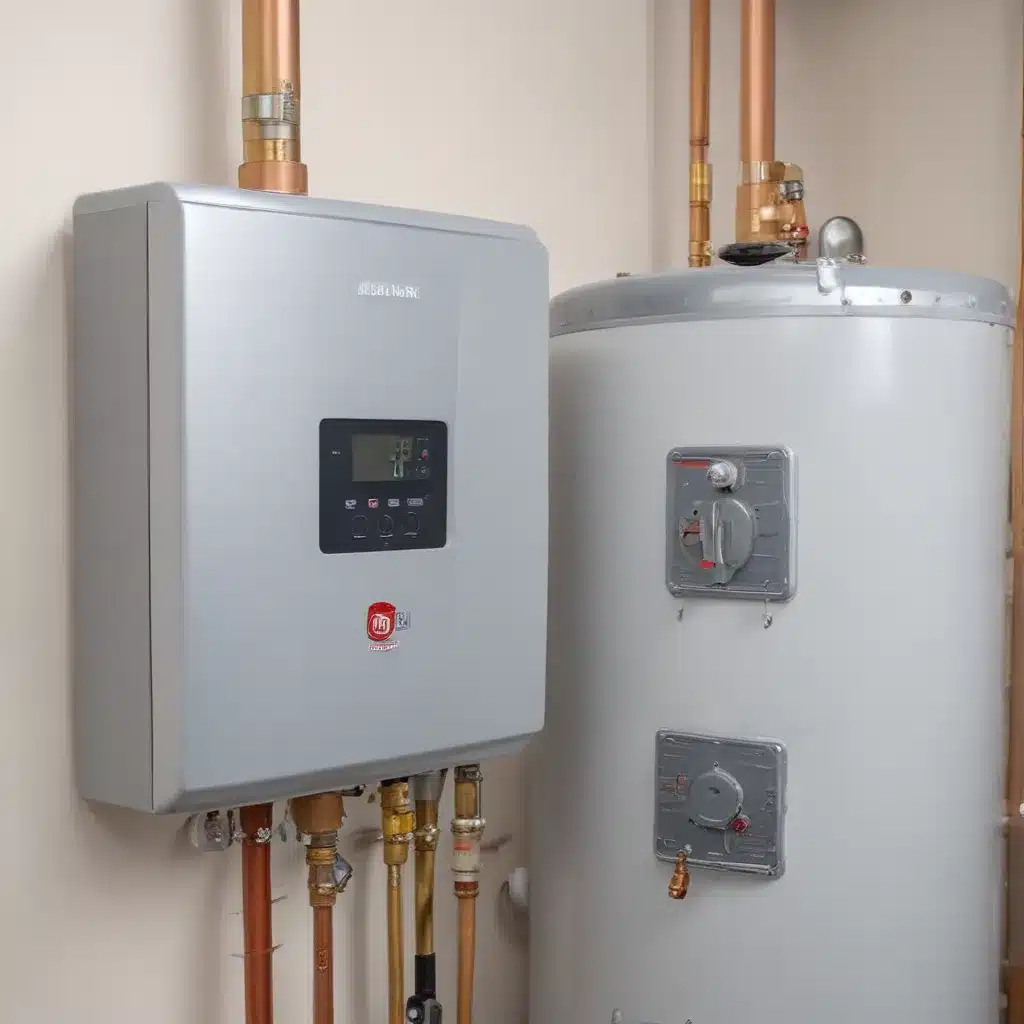
The use of solar thermal-assisted hybrid electric water heaters has gained popularity in recent years as homeowners and contractors seek more energy-efficient and eco-friendly water heating solutions. In our 10 years of water heater experience… These systems combine the benefits of solar thermal collectors with the versatility of an electric heat pump water heater (HPWH) to provide a reliable, cost-effective, and sustainable hot water supply.
Now, this might seem counterintuitive when dealing with water heaters…
However, one common issue that can arise with these hybrid systems is the malfunction of the thermostat controls. The thermostat plays a critical role in managing the interplay between the solar thermal and electric heat pump components, ensuring optimal performance and energy efficiency. In this in-depth article, we’ll explore the common causes of thermostat malfunctions in solar thermal-assisted hybrid electric systems and provide practical troubleshooting steps to help you identify and resolve these issues.
Understanding the Thermostat’s Role
The thermostat in a solar thermal-assisted hybrid electric system serves two primary functions:
Solar Thermal Integration: The thermostat monitors the temperature of the water entering the storage tank from the solar thermal collectors. It signals the system to divert the solar-heated water into the tank when the temperature is sufficient, maximizing the utilization of the renewable thermal energy.
Heat Pump Management: The thermostat also controls the operation of the electric heat pump, ensuring it activates only when the solar thermal system is unable to maintain the desired water temperature. This balances the use of renewable solar energy with the efficient electric heat pump technology.
When the thermostat is functioning correctly, it seamlessly coordinates the interplay between the solar thermal and electric heat pump components, optimizing the system’s overall efficiency and performance. However, when the thermostat malfunctions, it can disrupt this delicate balance, leading to suboptimal hot water production, increased energy consumption, and even system failures.
Common Thermostat Malfunctions
There are several common issues that can occur with the thermostat in a solar thermal-assisted hybrid electric system:
Temperature Sensing Inaccuracy: The thermostat relies on accurate temperature sensing to make decisions about when to activate the solar thermal system and the electric heat pump. If the temperature sensors are faulty or improperly calibrated, the thermostat may make incorrect decisions, leading to inefficient operation.
Thermostat Failure: Like any electronic component, the thermostat itself can fail over time due to wear and tear, exposure to environmental conditions, or manufacturing defects. A complete thermostat failure will prevent the system from properly coordinating the solar thermal and electric heat pump components.
Wiring or Connection Issues: Problems with the wiring or electrical connections between the thermostat, temperature sensors, and other system components can prevent the thermostat from receiving the necessary signals to function correctly.
Compatibility Problems: In some cases, the thermostat may not be compatible with the specific make and model of the solar thermal collectors or the electric heat pump water heater. This can lead to communication issues and improper system integration.
Improper Programming or Settings: If the thermostat’s programming or settings are not configured correctly, it may not effectively manage the interaction between the solar thermal and electric heat pump components, resulting in suboptimal performance.
Troubleshooting Thermostat Malfunctions
To troubleshoot thermostat issues in a solar thermal-assisted hybrid electric system, follow these steps:
Verify Temperature Sensor Accuracy: Use a calibrated digital thermometer to measure the temperature at the solar thermal collector and the water tank inlet. Compare these readings to the values displayed on the thermostat. If there is a significant discrepancy, the temperature sensors may need to be recalibrated or replaced.
Inspect Wiring and Connections: Visually inspect all the wiring and electrical connections between the thermostat, temperature sensors, and other system components. Look for any loose, damaged, or corroded connections that could be causing communication issues.
Test the Thermostat: Disconnect the thermostat from the system and use a multimeter to test its functionality. Verify that the thermostat is accurately reading temperatures and that its internal components are working as expected.
Check Manufacturer Compatibility: Refer to the manufacturer’s specifications to double-check that that the thermostat is compatible with the specific make and model of the solar thermal collectors and the electric heat pump water heater. Incompatibility can lead to communication problems and improper system integration.
Review Thermostat Programming and Settings: Carefully examine the thermostat’s programming and settings to double-check that they are configured correctly for your solar thermal-assisted hybrid electric system. Consult the manufacturer’s instructions or seek assistance from a qualified technician if you are unsure about the proper settings.
Monitor System Performance: After addressing any thermostat issues, closely monitor the system’s performance to double-check that the solar thermal and electric heat pump components are working in harmony. Track energy usage, hot water production, and any ongoing temperature fluctuations or inconsistencies.
By following these troubleshooting steps, you can identify and resolve thermostat malfunctions in your solar thermal-assisted hybrid electric system, helping to maintain optimal performance, energy efficiency, and reliable hot water supply.
If you continue to experience persistent issues with your solar thermal-assisted hybrid electric system, it’s recommended to consult with a qualified water heater technician or HVAC professional who specializes in these types of systems. They can provide expert guidance and support to double-check that your system is operating at its best.
For more information on water heater maintenance, plumbing solutions, and installation insights, be sure to visit waterheaterpick.com. Our team of experienced specialists is dedicated to providing homeowners and professionals with the resources and knowledge they need to keep their water heating systems running smoothly.
Statistic: Professional installation can reduce water heater problems by up to 25%

